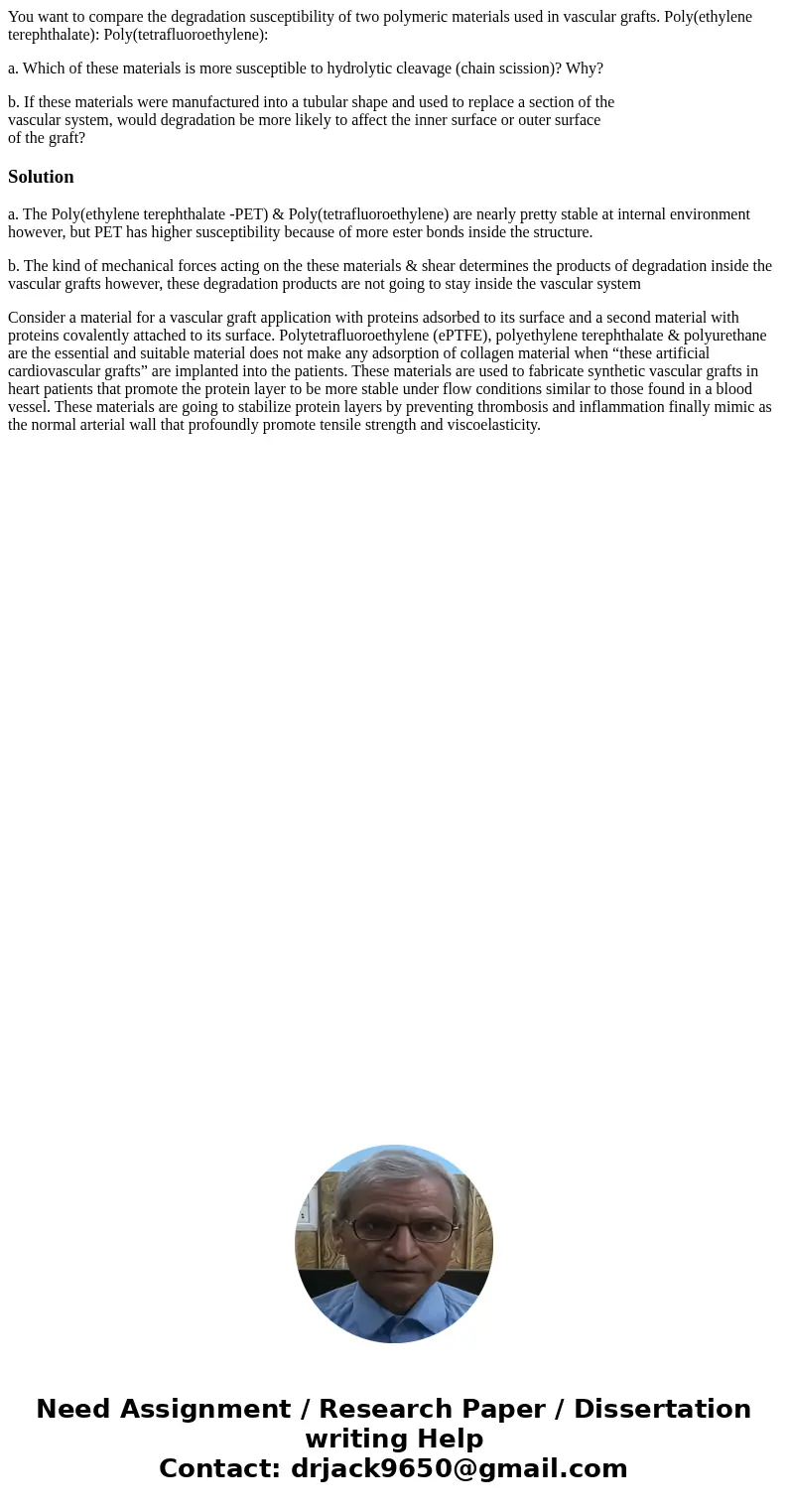You want to compare the degradation susceptibility of two po
You want to compare the degradation susceptibility of two polymeric materials used in vascular grafts. Poly(ethylene terephthalate): Poly(tetrafluoroethylene):
a. Which of these materials is more susceptible to hydrolytic cleavage (chain scission)? Why?
b. If these materials were manufactured into a tubular shape and used to replace a section of the
vascular system, would degradation be more likely to affect the inner surface or outer surface
of the graft?
Solution
a. The Poly(ethylene terephthalate -PET) & Poly(tetrafluoroethylene) are nearly pretty stable at internal environment however, but PET has higher susceptibility because of more ester bonds inside the structure.
b. The kind of mechanical forces acting on the these materials & shear determines the products of degradation inside the vascular grafts however, these degradation products are not going to stay inside the vascular system
Consider a material for a vascular graft application with proteins adsorbed to its surface and a second material with proteins covalently attached to its surface. Polytetrafluoroethylene (ePTFE), polyethylene terephthalate & polyurethane are the essential and suitable material does not make any adsorption of collagen material when “these artificial cardiovascular grafts” are implanted into the patients. These materials are used to fabricate synthetic vascular grafts in heart patients that promote the protein layer to be more stable under flow conditions similar to those found in a blood vessel. These materials are going to stabilize protein layers by preventing thrombosis and inflammation finally mimic as the normal arterial wall that profoundly promote tensile strength and viscoelasticity.

 Homework Sourse
Homework Sourse